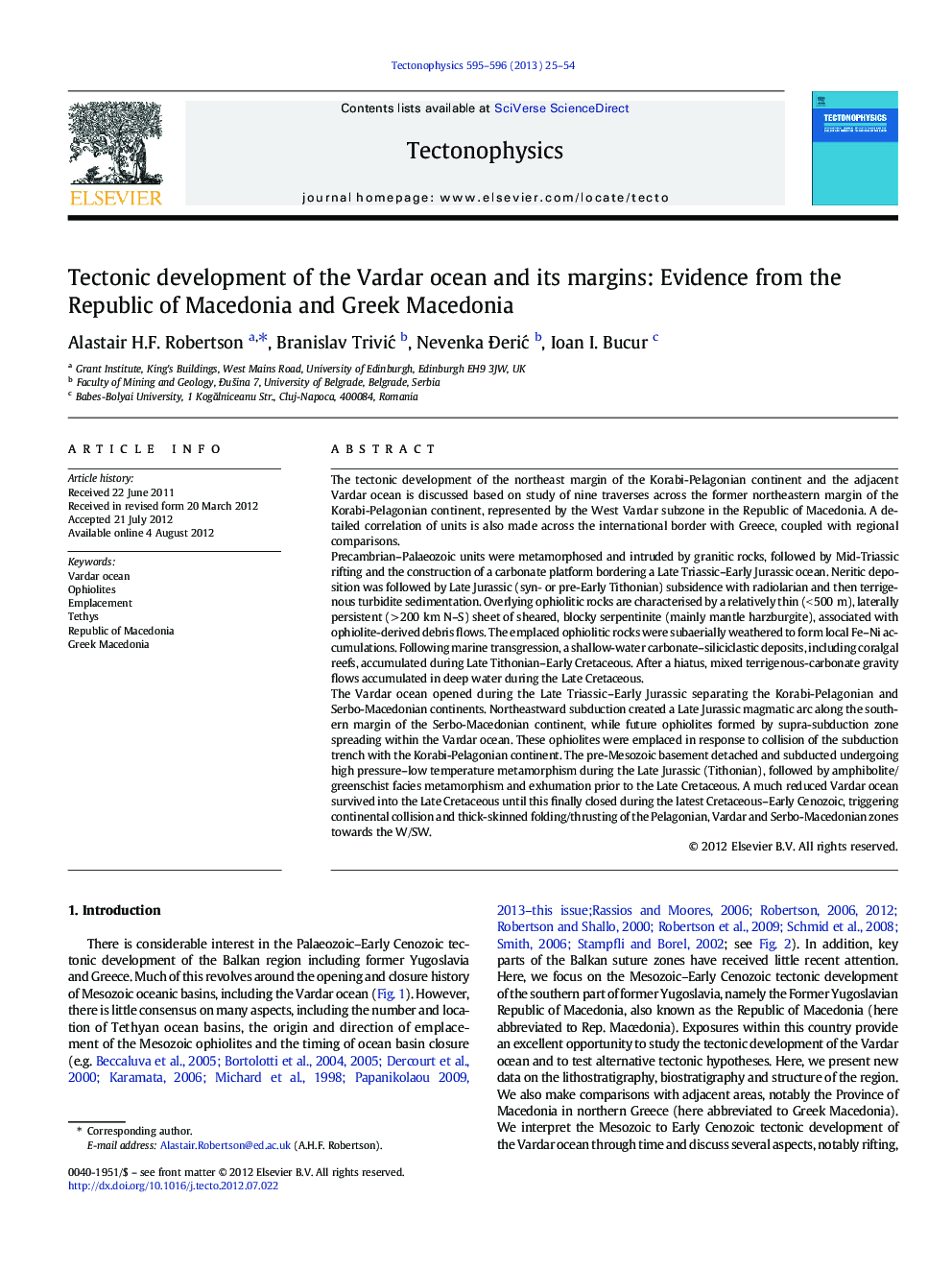| کد مقاله | کد نشریه | سال انتشار | مقاله انگلیسی | نسخه تمام متن |
|---|---|---|---|---|
| 4692295 | 1636790 | 2013 | 30 صفحه PDF | دانلود رایگان |
The tectonic development of the northeast margin of the Korabi-Pelagonian continent and the adjacent Vardar ocean is discussed based on study of nine traverses across the former northeastern margin of the Korabi-Pelagonian continent, represented by the West Vardar subzone in the Republic of Macedonia. A detailed correlation of units is also made across the international border with Greece, coupled with regional comparisons.Precambrian–Palaeozoic units were metamorphosed and intruded by granitic rocks, followed by Mid-Triassic rifting and the construction of a carbonate platform bordering a Late Triassic–Early Jurassic ocean. Neritic deposition was followed by Late Jurassic (syn‐ or pre-Early Tithonian) subsidence with radiolarian and then terrigenous turbidite sedimentation. Overlying ophiolitic rocks are characterised by a relatively thin (< 500 m), laterally persistent (> 200 km N–S) sheet of sheared, blocky serpentinite (mainly mantle harzburgite), associated with ophiolite-derived debris flows. The emplaced ophiolitic rocks were subaerially weathered to form local Fe–Ni accumulations. Following marine transgression, a shallow-water carbonate–siliciclastic deposits, including coralgal reefs, accumulated during Late Tithonian–Early Cretaceous. After a hiatus, mixed terrigenous-carbonate gravity flows accumulated in deep water during the Late Cretaceous.The Vardar ocean opened during the Late Triassic–Early Jurassic separating the Korabi-Pelagonian and Serbo-Macedonian continents. Northeastward subduction created a Late Jurassic magmatic arc along the southern margin of the Serbo-Macedonian continent, while future ophiolites formed by supra-subduction zone spreading within the Vardar ocean. These ophiolites were emplaced in response to collision of the subduction trench with the Korabi-Pelagonian continent. The pre-Mesozoic basement detached and subducted undergoing high pressure–low temperature metamorphism during the Late Jurassic (Tithonian), followed by amphibolite/greenschist facies metamorphism and exhumation prior to the Late Cretaceous. A much reduced Vardar ocean survived into the Late Cretaceous until this finally closed during the latest Cretaceous–Early Cenozoic, triggering continental collision and thick-skinned folding/thrusting of the Pelagonian, Vardar and Serbo-Macedonian zones towards the W/SW.
► Evolution of Vardar ocean
► Vardar ocean ophiolites
► Continental margin evolution
► Alternative tectonic models
Journal: Tectonophysics - Volumes 595–596, 4 June 2013, Pages 25–54
